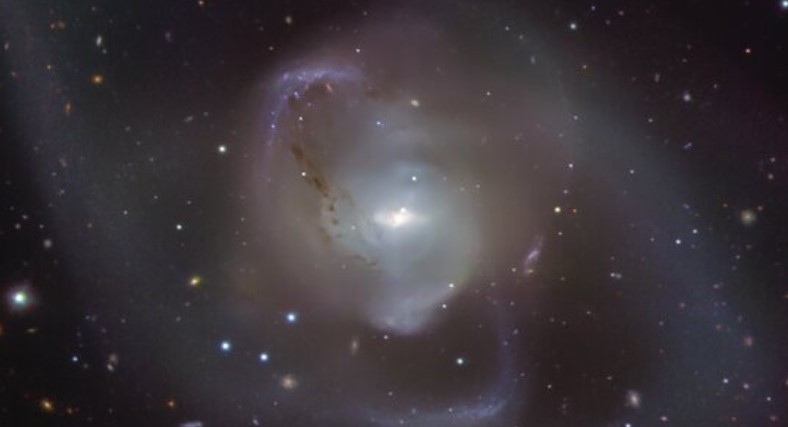The modern space telescope could very well know what's going on in certain galaxies. Astronomers usually use this tool to detect interesting sightings on a galactical display and discover new knowledge about its composition.
Recently, the European Southern Observatory, or ESO's Very Large Telescope (VLT), has snapped a bizarre galactic collision. The experts said that this galaxy was formed by two smaller galaxies billions of years ago.
This merger has become more interesting o study for the experts because of the two supermassive black holes inhabiting this humongous galaxy.
ESO's VLT Snaps Image of Galactic Collision

(Photo : ESO)
ESO's Very Large Telescope has snapped a spectacular image of a bizarre galaxy that has two huge black holes at its center.
Just when we thought that our knowledge of galaxies ends with the Milky Way and Andromeda, there's much more to explore in the ever-expanding cosmos.
The galactic realm is full of complexities and curiosities that still leave an impression in the eyes of astronomers.
According to CNET, the researchers who have been using the Very Large Telescope have surprisingly captured a peculiar display of a cosmic bump.
When two or more galaxies collide, there's a possibility that a gigantic galaxy will be formed. The formation will depend on the sizes of the entities.
Of course, it's a long process that takes place for millions or billions of years. During the merge, their composition, including the planetary dust and gasses, mix up.
When the scientists spotted a merged galaxy, they named it GC 7727. It's somehow disorganized, but there's more unusual information about the picture.
In close look, we can see that this galaxy features a faint image of tails and bodies. It appears to be sucking every spatial fiber on its path, and that includes the stars surrounding the galaxy.
"We see the tangled trails created as the two galaxies merged, stripping stars and dust from each other to create the spectacular long arms embracing NGC 7727. Parts of these arms are dotted with stars, which appear as bright blue-purplish spots in this image," ESO said.
Related Article: ESO's Very Large Telescope Catches A Starburst Galaxy Brimming In A 'Whirlpool of Gold'
Supermassive Black Holes
There's more to see on this galactic merger. Another interesting sighting that is present in the photo is a pair of supermassive black holes, which are forming an even bigger black hole. ESO says that these objects are destined to combine as one.
The collision might appear beautiful in a far view, but in reality, it's very violent. However, the same scenario with the stars is quite different.
Instead of bumping each other, they appear to be dancing around, as Phys.org reported earlier this week. This event was described as the "cosmic dance."
In the next decade, ESO is preparing to launch the Extremely Large Telescope, which is set to witness a more detailed view of black holes and galaxies in space.
Billions of years from now, the galaxy where the Earth is located could one day merge with the Andromeda galaxy. This very instance could be similar to what happened to the NGC 7727.
Read Also: US Bolsters Climate Resilience Thanks to Heat Island Mapping Across Cities
This article is owned by Tech Times
Written by Joseph Henry









